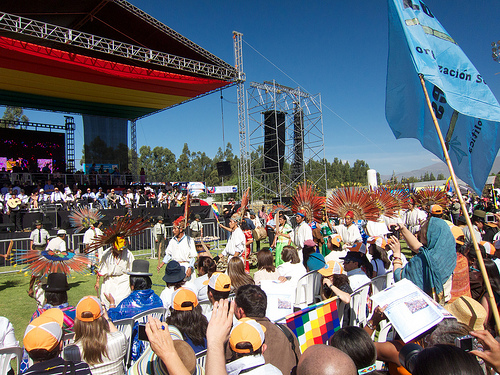Send your question to Umbra!
Q. Dear Umbra,
I’ve been following the discussion of GINKs and birth control on Grist the last week or so. In your most recent post, I thought there was a pretty big type of birth control missing: Fertility Awareness Method (FAM)—which is not to be confused with the “rhythm method” or natural family planning (NFP). FAM is extremely “green” as it requires no rubbers or chemicals; it is also extremely empowering to women and supports personal health. If you haven’t read it already, I highly recommend Toni Weschler’s book Taking Charge of Your Fertility as a primer on FAM. I originally picked up the book in my research on trying to conceive, but the book is actually more about learning about women’s cycles and how to prevent or facilitate pregnancy. After reading it, I truly believe it is a must-read for all women. (BTW, the author is a Seattle girl.)
Amanda R.
Seattle
A. Dearest Amanda,
 You are not the only FAM supporter to chide me about not including the Fertility Awareness Method as one of the environmentally conscious birth control options in my April 12 column.
You are not the only FAM supporter to chide me about not including the Fertility Awareness Method as one of the environmentally conscious birth control options in my April 12 column.
I stand corrected. According to Planned Parenthood, FAM is as effective a birth control method as condoms—resulting in 15-25 pregnancies per 100 women each year. And as you point out, FAM is even more eco-friendly.
For those readers who aren’t in the know about FAM, it’s a pretty simple system. The idea is if you keep your vagina sperm-free during that most fertile time of the month, you’ll remain baby-free. You can maintain the no sperm zone either by abstaining or by using some kind of barrier method of birth control (condom, diaphragm, cervical cap). That’s the easy part. The hard part is knowing when the most fertile time is. Of course, it’s different for every woman. FAM requires an investment of time to track your own ovulation schedule, which is typically done by monitoring your basal body temperature and cervical mucus on a daily basis. To learn much more about the FAM approach, I also highly recommend Toni Weschler’s book. It’s got all the nitty gritty FAM details, and it’s a great read—whether you’re trying to get pregnant or trying to avoid it.
Fertily,
Umbra
Q. Dear Umbra,
Which is more ecologically friendly—grilling out using charcoal or propane?
Tomm G.
Waukesha, Wis.
A. Dearest Tomm,
Ah, yes, The grilling season is upon us. What I wouldn’t give for a grilled veggie kabob and a frosty glass of lemonade right now. But about your BBQ pondering…
Simply stated: Go with gas (that is, unless you feel adventurous and want to make your own solar oven!). It’s far easier to control the temperature of a gas grill (no more burgers burnt to a crisp), and gas grills produce about half as much CO2 as charcoal grills. And you’ll save yourself the pain (literally) from all those headache-inducing volatile organic compounds (VOCs) that charcoal gives off.
If you absolutely must have charcoal in your grill (I’m not a fan of the charcoal-y taste, but to each his own), at least ditch the petrol-based conventional briquettes for ones made from more sustainable materials such as coconut shells or wood scraps. And please forgo the plastic lighters and fossil fuel lighter fluids. An electric fire starter or chimney starter work just as well.
Finally, take good care of your grill. That way you prolong its life and save all the materials and energy that go into producing a new one. Here’s a little DIY grill-care tip: Got an onion lying around that’s past its eating prime? Cut it in half and rub the cut side over the grill’s grates to remove any burnt-on food particles. You can compost the onion. Then use my old standby—baking soda and water—to remove grease, and rub a little cooking oil on the grates to prevent rust.
Charredly,
Umbra
On Earth Day, I posed the question to readers, “What can you commit to doing—not just as an individual in your own home, but in your community, neighborhood, apartment building, school, or office—to work toward a brighter green future?”—I was inspired by the responses, so I wanted to share a few with you. What are you committing to do? Let me know in the comments area below.
“Our island community is already under assault by tons and tons of garbage. As a member of a wonderful but challenged community, I pledge to continue to work to build support for and sustain the ‘papergoodless’ initiative that I helped to initiate at our children’s school, which means at all parent faculty monthly meetings, executive board meetings, and board meetings throughout the year, reusable dishware is used to serve lunch/refreshments in lieu of using disposable paper/plastic products.” —MamaRose
“I have already committed to improving school lunches in our school district by getting them to offer vegan options and more local produce. I am also trying to get the school that my kids attend to plant a garden and grow some of the produce themselves.” —Rhonda H.
“We have encouraged our neighbors to begin using the limited curbside recycling in our neighborhood. A couple of weeks ago, our family of four placed no trash for pickup, only recyclables, and I had three neighbors ask how we do it. I described our system of recycling, buying products with the least packaging, reusing, and composting.” —Jill S.



